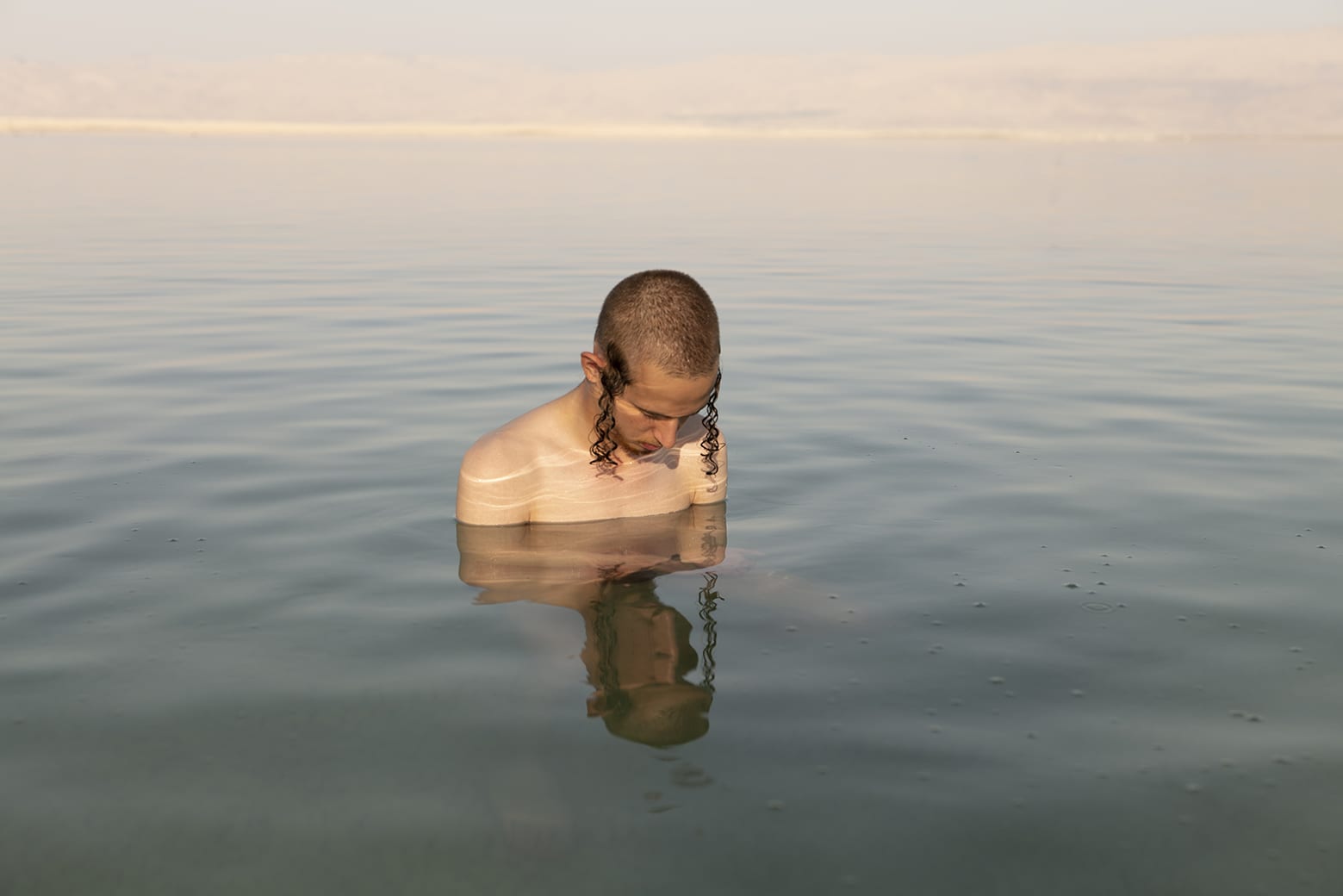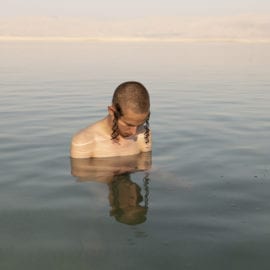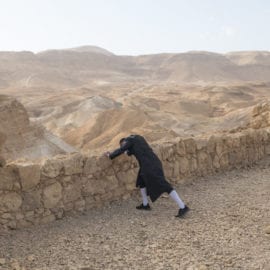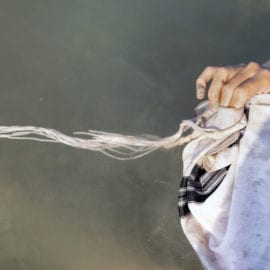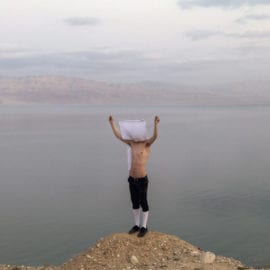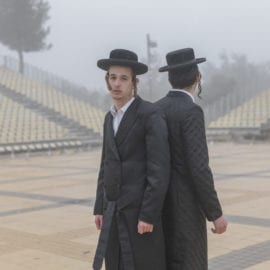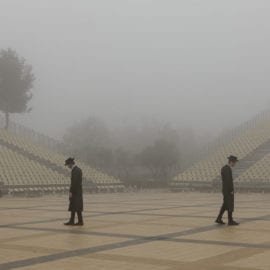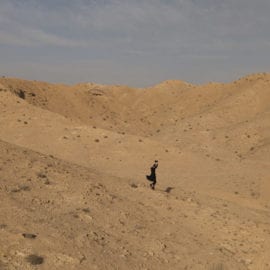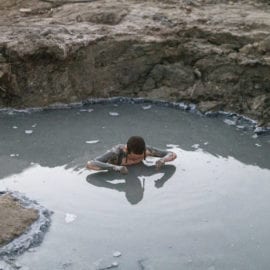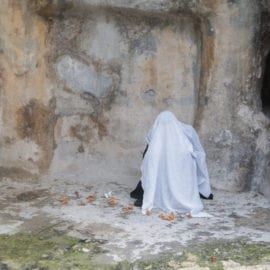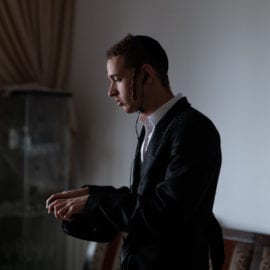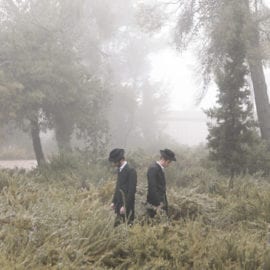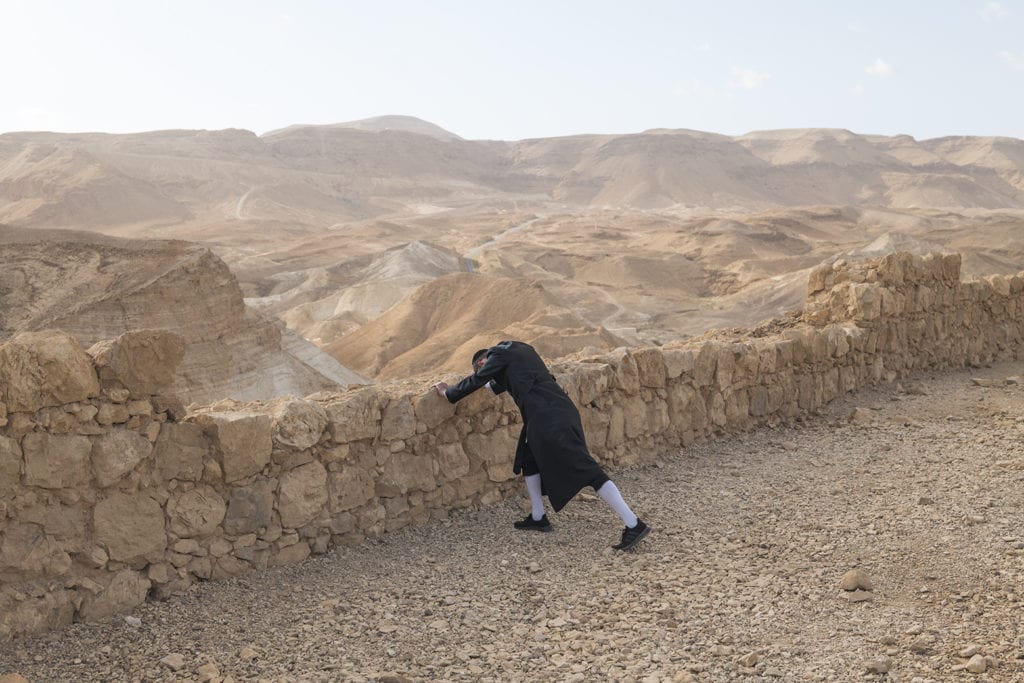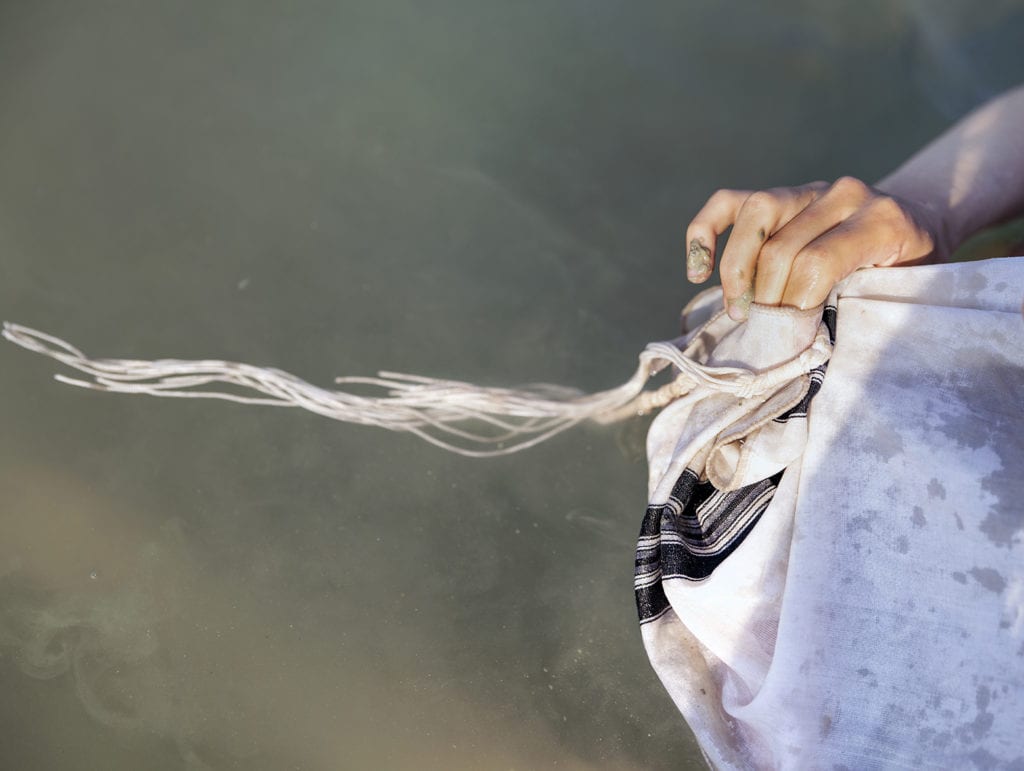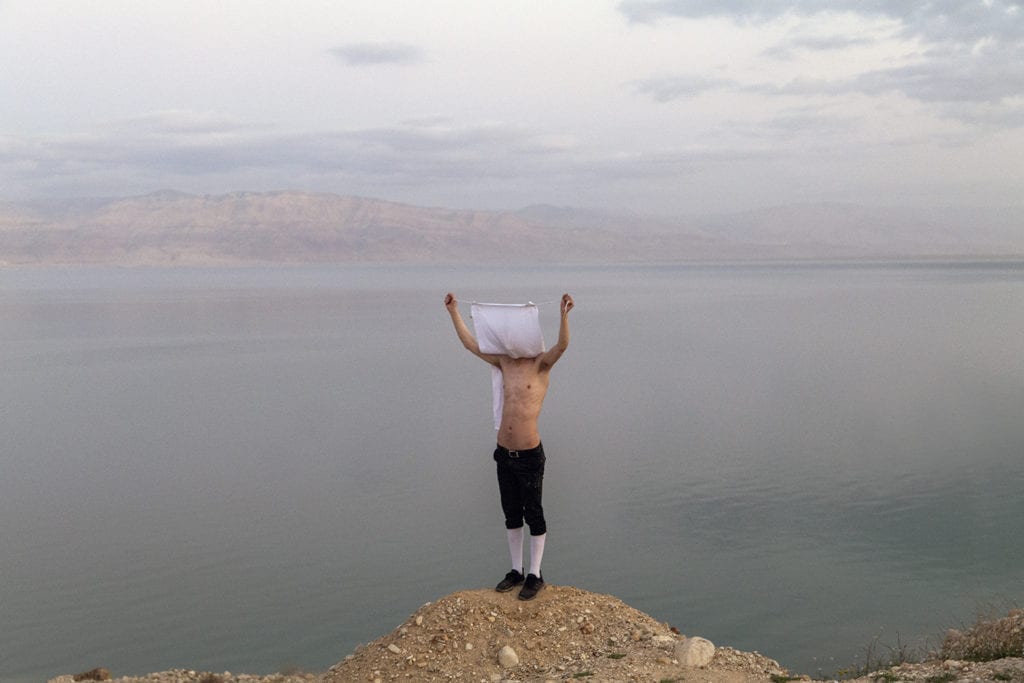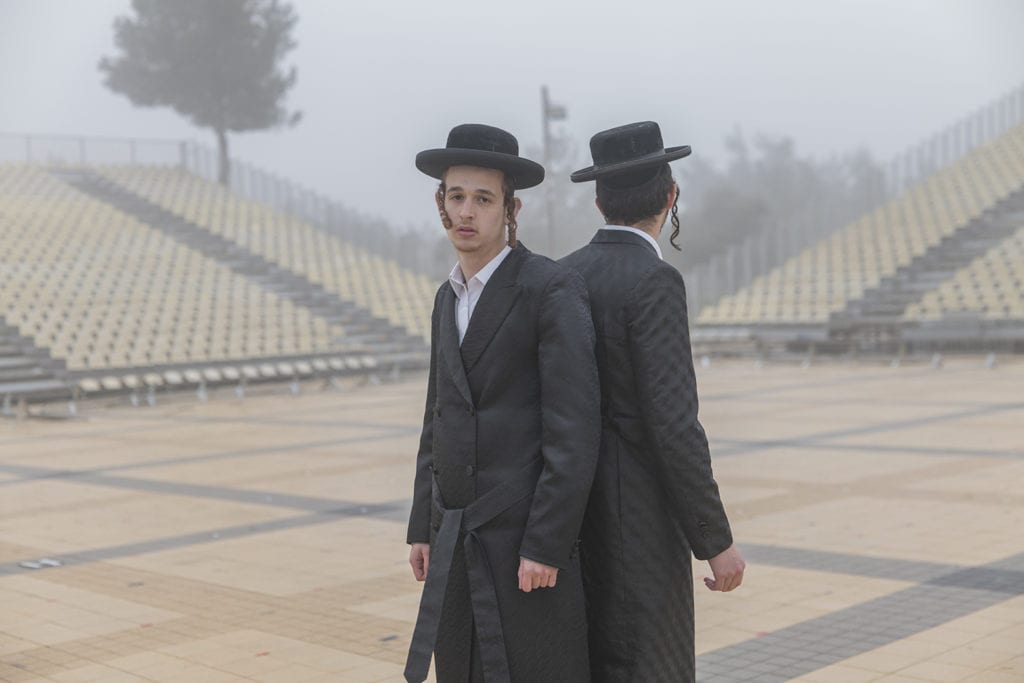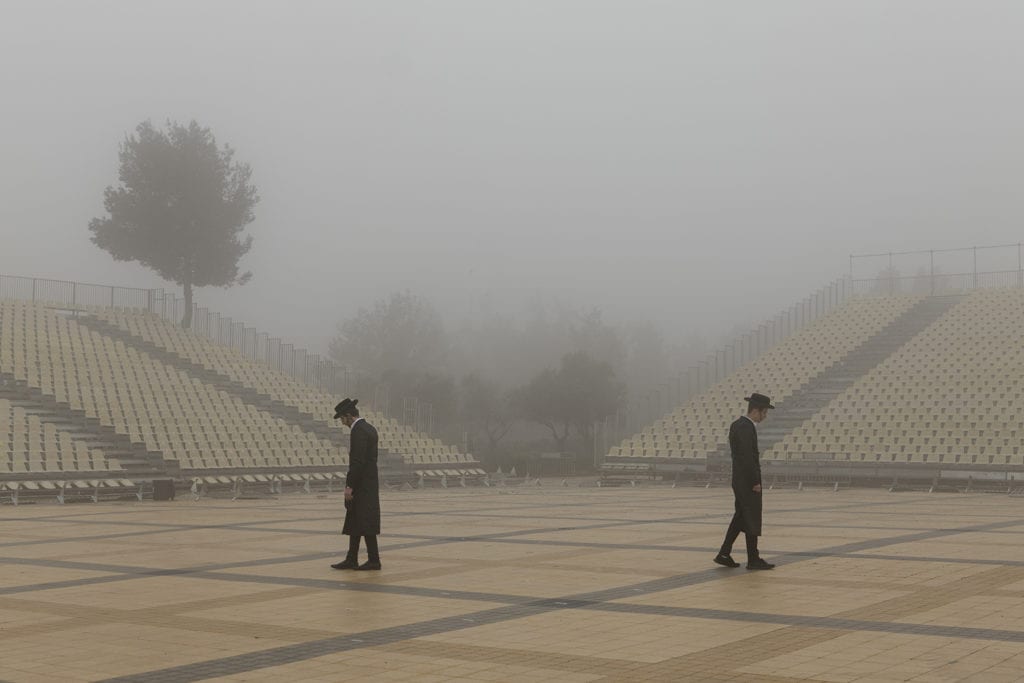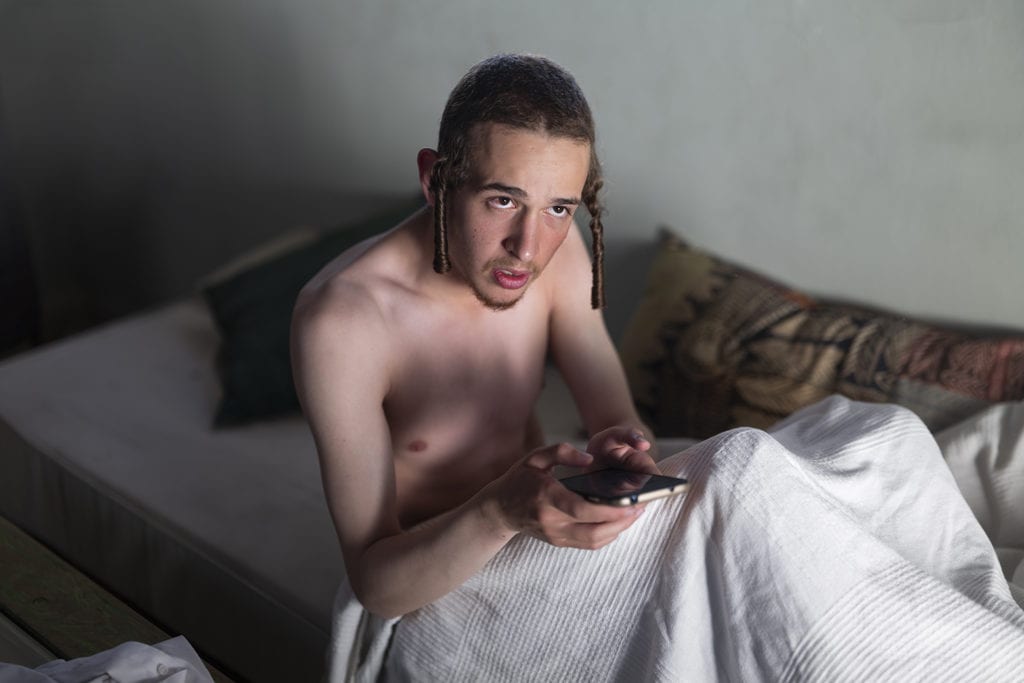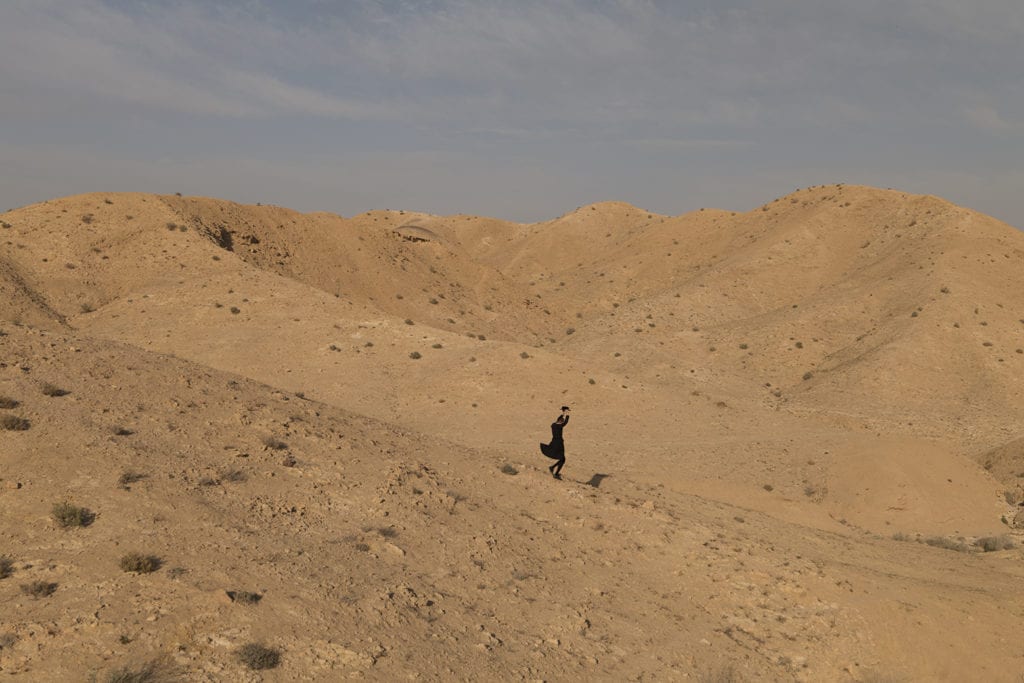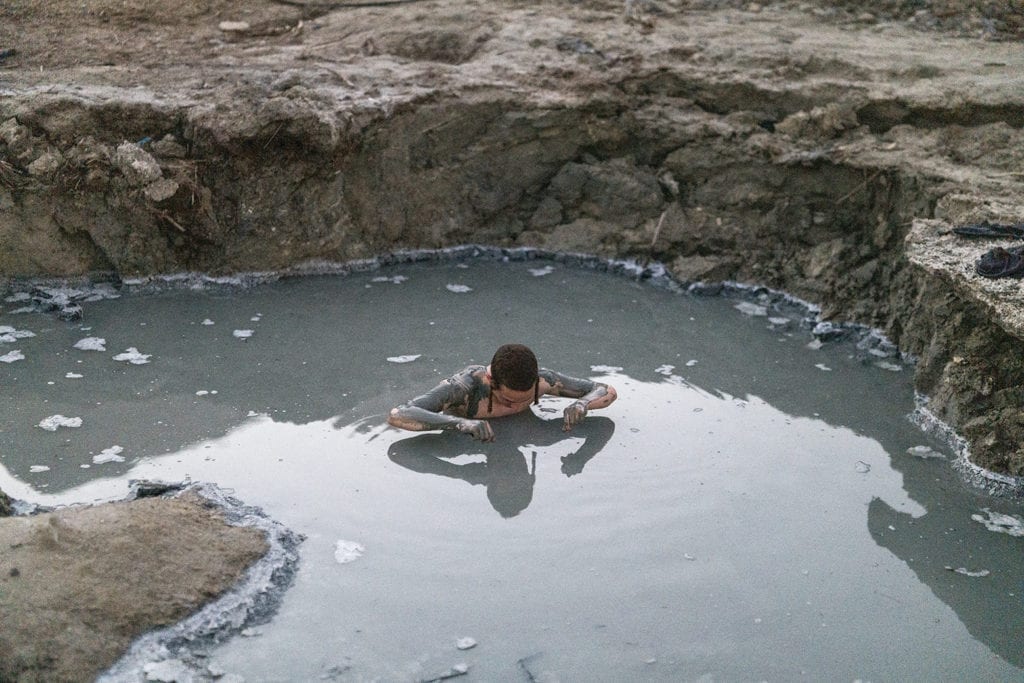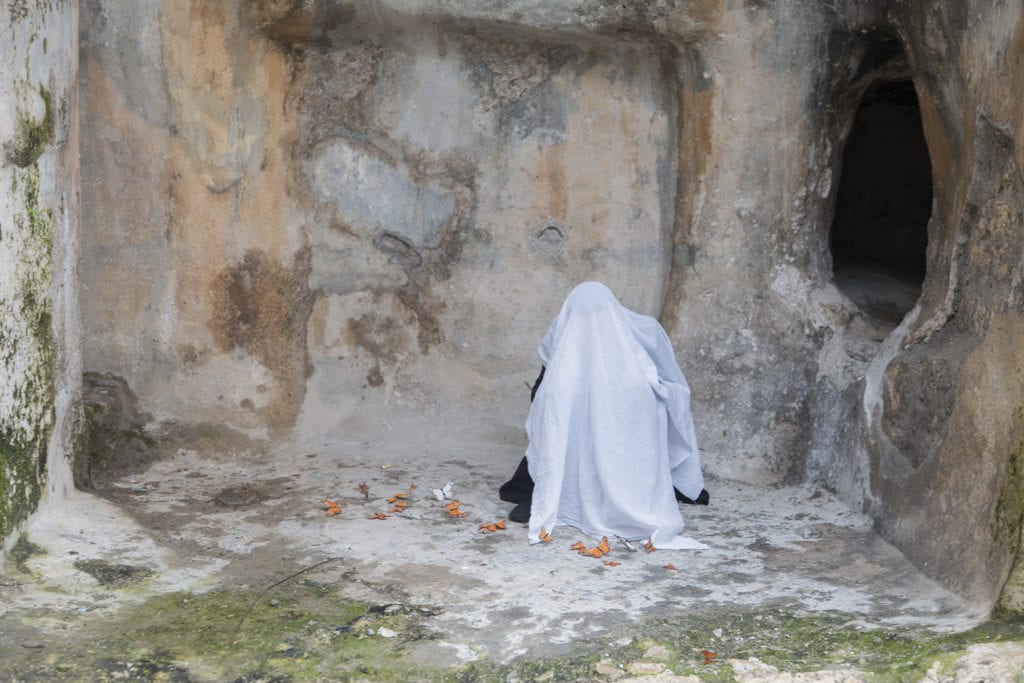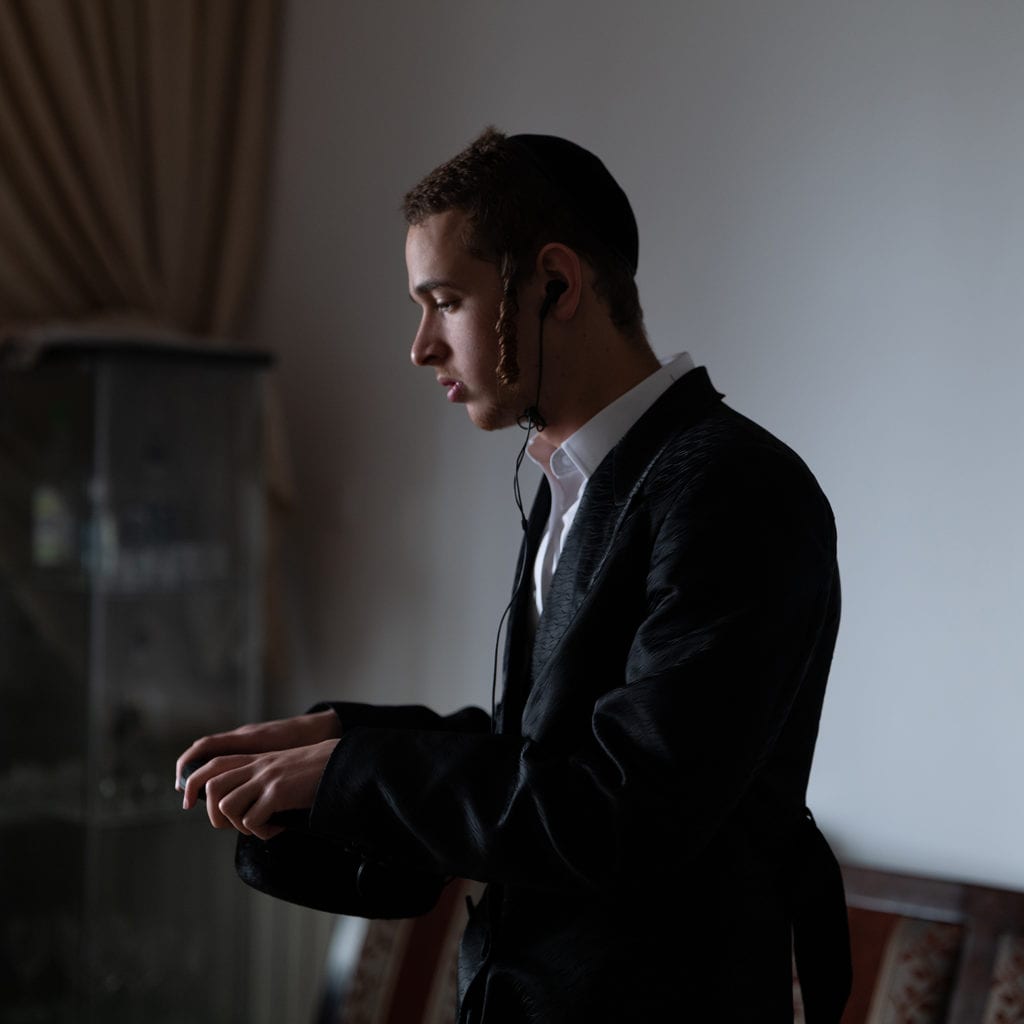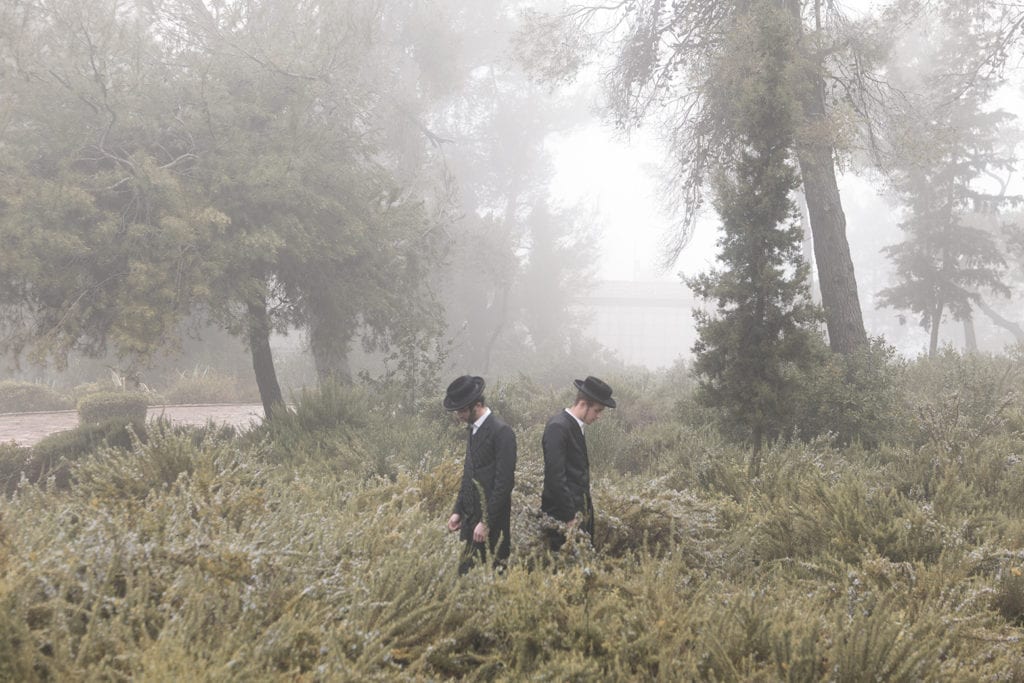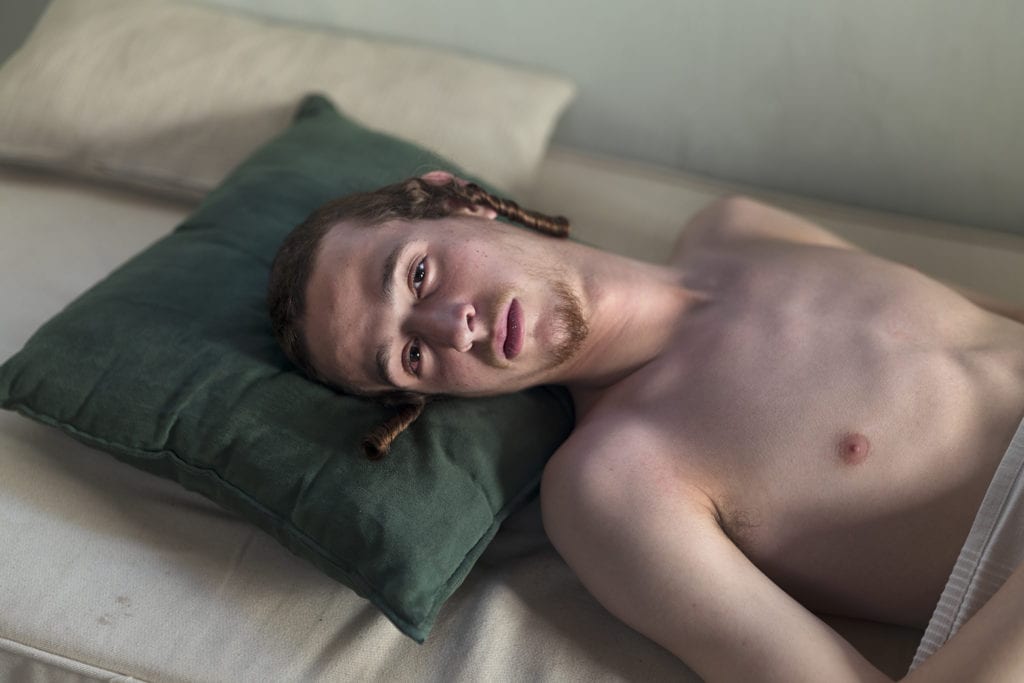The film extends this symbolic approach. Baruch steps through an extraordinary landscape, a tall, broad forest of thick date palm trees that stretches on indefinitely, the wildness of the terrain in contrast with the smartness of his suit. He floats, weightless, in the Dead Sea, seen from high above so that he looks like a piece of drifting flotsam. These vistas remind us of the unfamiliar and unknown life Baruch is carving for himself, his fearlessness as he walks into it, how exotic it must feel, how exhilarating. Elsewhere in the film we are granted a closer look at the life he is leaving behind: street scenes, Hasidic life thrumming busily by. Baruch’s voice asks us, as we watch groups of pedestrians walking across an intersection of numerous roads: ‘What path is right? What makes us who we are?’
True to form, Pannack was rigorous in her creative method, using the assignment as an opportunity to push her work in new directions. “I try to really challenge my visual approach with each project,” she explains. “I don’t mean in a gimmicky way, but in one that pushes my understanding of how I see the world.” The collaborative creation of dream-like tableaus was one way of doing just that: the setting aside of documentary methods allowed her to access subtler psychological aspects of Baruch’s personal journey. Pannack’s vision is open, with a cultivated naïveté: “I try to stay open-minded and portray my lack of understanding, but desire to learn.”

